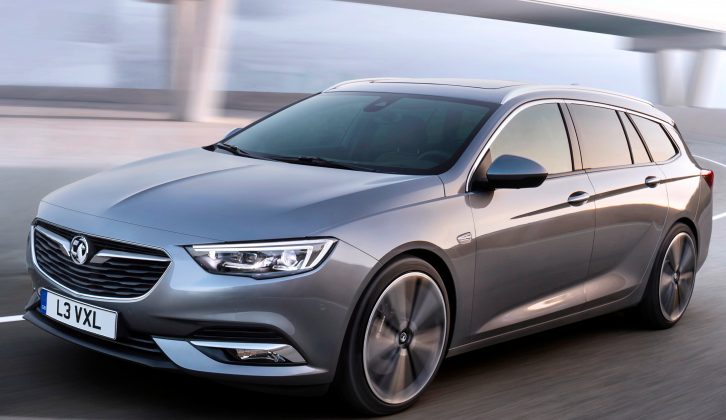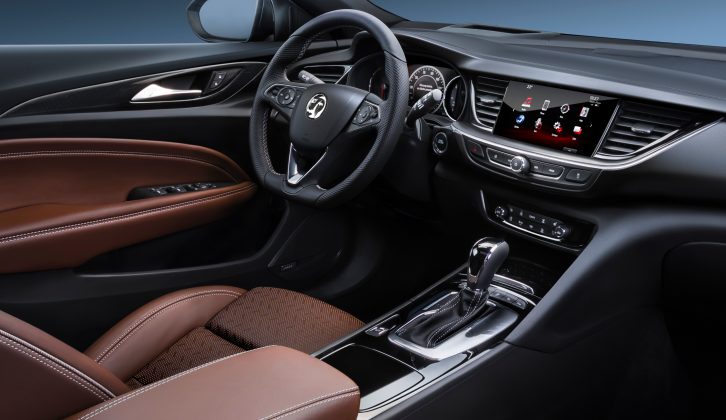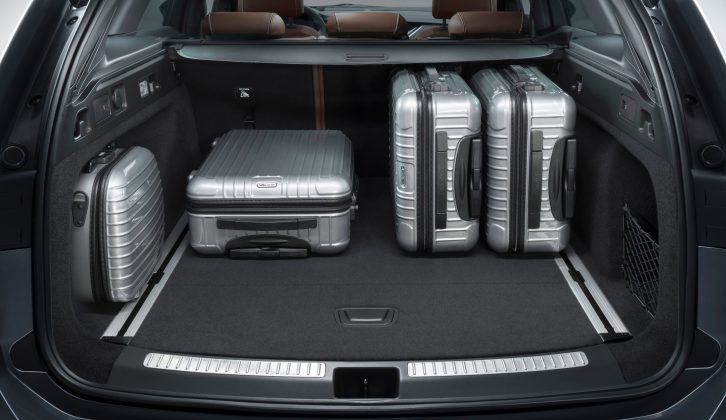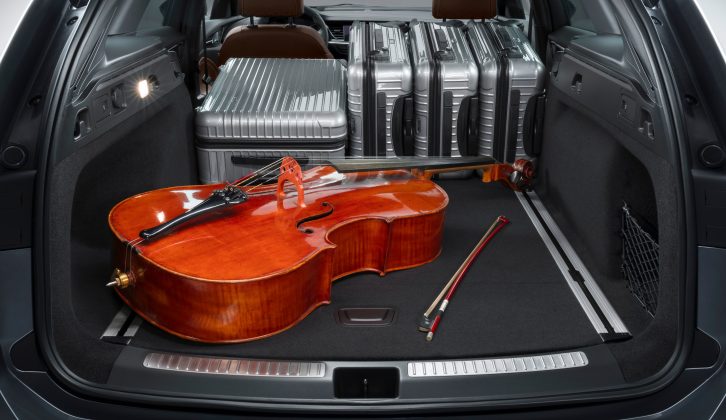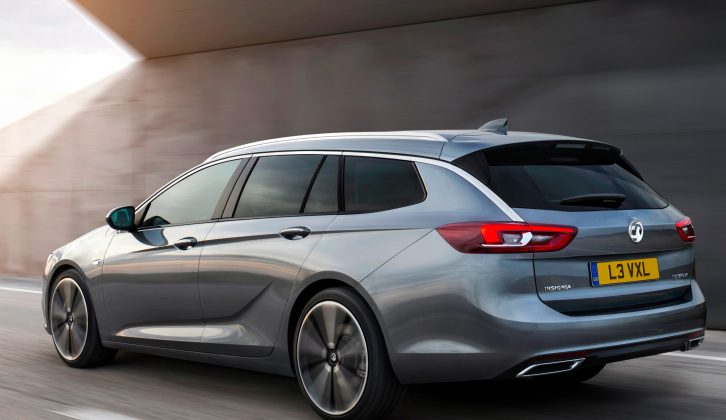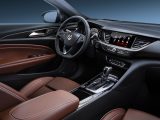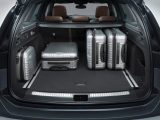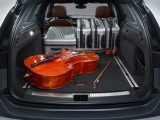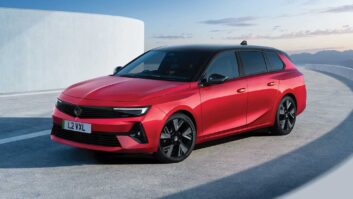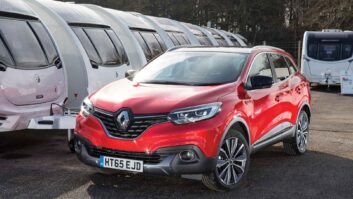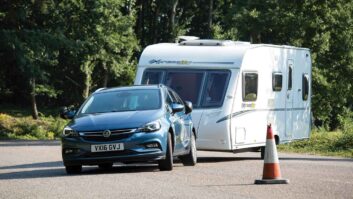If you’re too rushed to read the whole of this review, I can sum up the new Vauxhall Insignia Sports Tourer in two words: ‘big’ and ‘cheap’.
For those with more than a passing interest, I’ll elaborate. The Sports Tourer is ‘big’ in terms of the room it takes up on the road, and its interior space.
The new car measures some 4986mm from bumper to bumper. To give that some context, it means the Vauxhall is 43mm longer than an Audi A6 Avant.
Making better use of its space
For the most part, Vauxhall has used that length to good effect. The old model wasted some of its length with a ponderous rear overhang you had to load bags over.
The new car has a much shorter distance between the edge of the bumper and the boot proper, which makes loading heavy items a lot easier.
Vauxhall admits the old model lost some sales because the boot wasn’t practical enough, so the new car’s load space is bigger. And this is important when considering what tow car potential it has, too.
There’s a 560-litre capacity with the seats upright, a 30-litre improvement. However, it still lags behind the Škoda Superb Estate‘s 660-litre capacity. That’s largely because although the Sports Tourer’s boot is long and wide, it’s not especially tall.
Switches either side of the tailgate (standard on all but Design and Design Nav spec) lower the back seats to increase the available space to 1665 litres. Again, that’s generous, but not class-leading, bettered by the Superb Estate’s 1950 litres.
Rear-seat comfort
So, the new Sports Tourer is a better estate than before. It’s an improved family car, too.
The wheelbase (the distance between the two axles) has been extended by 92mm, which makes for much more rear legroom. I’m 6’3″, and could sit behind a seat set up for me with room to spare.
However, in cars fitted with a panoramic sunroof, my head was brushing the ceiling.
There are air vents between the two front seats to make sure those in the back get plenty of chilled air, and two USB ports to keep mobile devices charged (again, on all models except Design and Design Nav).
Value for money
That pretty much covers the ‘big’ part. Now onto ‘cheap’. Prices for the Insignia Sports Tourer start from just £18,685.
So, you can buy a car that’s longer than an Audi A6 Avant and has a similar luggage capacity, for just £265 more than the price of the cheapest VW Golf five-door. And while the entry-level Golf has an 85PS (84bhp) engine, the Insignia’s has 140PS (138bhp).
Now, that buys you a Design model with a reasonable rather than generous specification. But upgrade to SRi Nav with a much longer list of kit – and prices still start from a modest £21,580.
If you’re thinking, ‘you get what you pay for’, the Insignia may well surprise you. The interior design is attractive, and the quality of finish is very impressive.
Yes, there are some hard plastics lower on the dash and doors, but this doesn’t feel like the cabin of a car built down to a price. Far from it.
On the road
I had the chance to drive three versions of the car, the 170PS (168bhp) 2.0-litre diesel, the 136PS (134bhp) 1.6-litre diesel, and the 165PS (163bhp) 1.5-litre petrol.
Of the three, the 2.0-litre diesel is the most likely choice for regular caravanners.
Vauxhall is keeping up its usual and deeply irritating policy of failing to publish kerbweights in its brochures. Even with the handbook, Vauxhall makes you work unnecessarily hard by using engine codes, rather than listing the cubic capacity and power.
The 170PS manual has a kerbweight of 1633kg (including 75kg for the driver). That gives a reasonably healthy 85% match figure of 1388kg, which compares well with a Škoda Superb Estate 2.0 TDI 190PS, with its 1580kg kerbweight/1343kg 85% match.
Vauxhall quotes a legal towing limit of 1950kg – considerably more than any caravanner would sensibly tow with the car – although a pedantic check of the gross train and vehicle weights on the VIN plate gives an apparent maximum of 1925kg.
With 295lb ft of torque, there’s plenty of pulling power for towing. That’s a lot more than the 1.6-litre, 136PS car’s 236lb ft, and you can certainly notice the difference in solo driving.
The 1.6 is also considerably lighter, with a kerbweight of 1503kg and a legal towing limit of 1405kg for the manual, dropping to 1300kg for the automatic.
As such, I’d certainly choose the 2.0-litre diesel over the less powerful engine, although the 1.6 achieves 62.8mpg on the combined cycle, rather than the 2.0’s 53.3mpg.
I also drove the 165PS petrol. It’s a fine choice for solo driving, refined and smooth, and should make a reasonable tow car if you really must have petrol power.
With kerbweights from 1487kg it’s relatively light, and has an 85% match figure of 1264kg. That’s well within the 1405kg legal towing limit.
A real contender
Whichever engine you choose, the Insignia drives well enough, without challenging the standard set by the Volkswagen Passat.
The ride is mostly comfortable, with a little fidgeting at high speeds. But it’s not as engaging to drive as the VW. Less road noise would improve the Insignia’s credentials as a long-distance cruiser.
It may be a solid rather than stand-out car from behind the wheel, but we’re not going to condemn the Vauxhall for that.
With so much space and such keen pricing the new Insignia Sports Tourer is hard to ignore.
You can buy a car that's longer than an Audi A6 Avant for just £265 more than the cheapest VW Golf five-door
